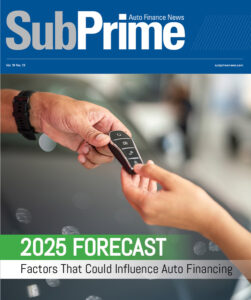Fitch: Auto ABS Beats Seasonality Trend But Higher Losses, Delinquencies to Remain
NEW YORK — Despite various negative indicators, U.S. auto asset-backed securities' delinquency and annualized net losses actually improved at a time of the year when performance characteristically begins to deteriorate, according to Fitch Ratings.
In fact, the company found that 60-plus day delinquencies on U.S. prime auto loan ABS fell 10.7 percent, while ANL levels declined 5.4 percent. Officials noted that this is despite elevated unemployment rates and declining consumer credit.
"Despite the temporary improvement in performance, we are entering the weakest performance period of the year," said Hylton Heard, senior director.
"Given the continued slide in consumer credit, elevated unemployment and tempering of vehicle value increases, losses and delinquencies should remain at higher levels through January 2010," he added.
The decline in prime auto ABS delinquencies (to 0.75 percent) is equal to the rate one year prior, officials pointed out. Apparently, they believe loss levels are benefiting from improved recovery performance as vehicle values remain at elevated levels.
With this latest decrease, prime ANL through October stands at 1.57 percent. Fitch indicated that it expects ANL will increase in the seasonally weaker winter months and approach the 2-percent level.
Furthermore, officials explained that loss severity is currently moderated by strong used-vehicle values, helping to slow the rate of loss rates in 2009. Reduced supply in the used-car market, among other factors, continues to support rising used-vehicle values this year.
"Declining asset performance has not affected rating performance, with senior level bonds continuing to perform as expected. Fitch has upgraded 31 classes of notes through Oct. 31 of this year, compared to 33 through the same period in 2008," executives highlighted.
Fitch's indices track the performance of more than 100 transactions totaling $65.3 billion worth of prime and subprime auto ABS. Prime loans compose 84 percent, and subprime loans the remaining 16 percent, according to the company.

 View The Latest Edition
View The Latest Edition

